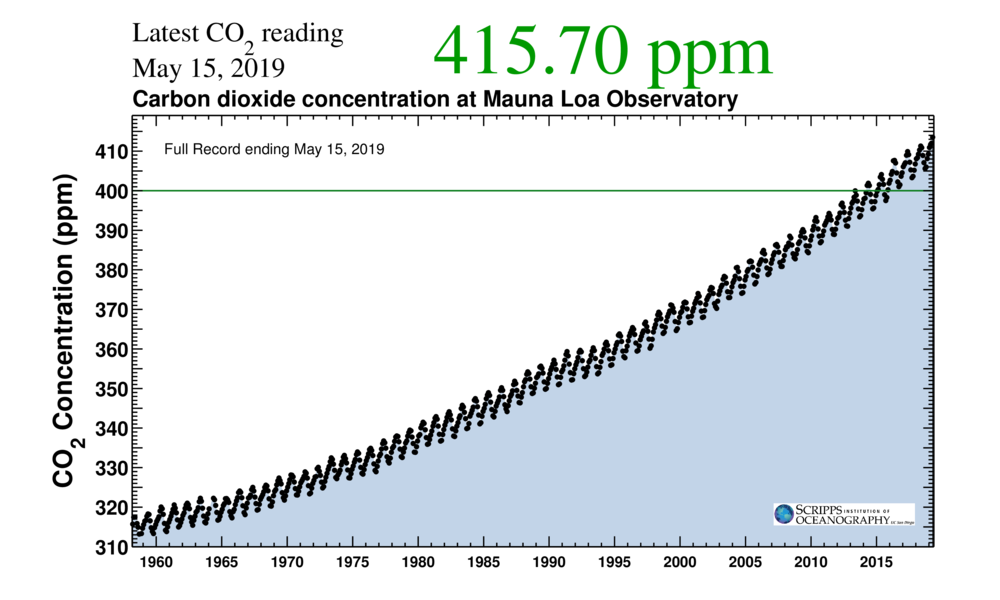 |
|
Photo courtesy of the Scripps Institution of Oceanography
|
Where We Are Today?
It has been nine months since The Climate Action Team of the Sierra Club and The Broad Theater in Santa Monica brought you the play “Dr. Keeling’s Curve”. Based on Charles Keeling, a scientist whose research on carbon dioxide (CO₂) gave the world its first early warnings of global warming. CO₂ is a greenhouse gas -a byproduct of burning fossil fuels - which traps heat from the sun and the more it gets released into the atmosphere, the warmer the planet gets. According to the National Oceanic and Atmospheric Administration (NOAA), the increases of atmospheric CO₂ are responsible for about two-thirds of the total energy imbalance causing Earth’s temperature to rise. The past few decades are proof of the rapid warming of the planet with the 10 warmest years in the 139-year record all having occurred since 2005, with the five warmest years being the five most recent years. Recently, a report revealed that at least 1 million species were at risk of extinction thanks to human activity and carbon emissions and that up to 300 million people are at increased risk of floods and hurricanes because of the loss of coastal habitats.
Sixty years ago, the Keelings Curve measured the CO₂ levels in the atmosphere at 315 ppm (parts per million), today we have reached 415 ppm, meaning that for every 1 million molecules of gas in the atmosphere, 415 were of CO₂. Higher levels of CO₂ are associated with higher global temperatures and other effects of climate change, such as rising seas and unusual weather patterns. The Earth’s atmosphere has climbed to a level last seen more than 3 million years ago.
With the Keeling Curve only increasing, as the planet inches toward 500 ppm, we are running out of time to address the climate emergency we are currently face resulting in an progressively unstable climate. Scientists are sounding the alarm over the potential for catastrophic changes to our environment reaching a general consensus: We have to cut carbon emissions in half by 2030. The reason why it is imperative to take action on climate change, keeping fossil fuels in the ground and switching to renewable energy.
Consequently, where do we go from here?
There is some good news at the state level as California is leading the way in our efforts to combat climate change. Last September, Gov. Brown signed into law SB 100, which mandates that our electric grid must be powered by clean energy by 2045. On December 2018, the California Air Resources Board passed a rule stating that all buses used in California must be zero emissions by 2040 and that all single housing units under three stories must have rooftop solar panels starting in 2020. At the local level, the city of Los Angeles efforts to take more aggressive actions on climate change has also been set in place through a new sustainability plan that incorporates a Green New Deal.
You as an individual can also help. Talk to your local city council, and write letters to the editor of your local newspaper demanding action on climate. Start transitioning to a more sustainable lifestyle, consuming less, conserving water, adapting your diet, avoiding waste, and becoming more energy efficient. But most importantly, by talking about climate change, getting others engaged and finding common ground.
Get involved with The Climate Action Team at angsc.org/climate. You can also contact Steve Wicke at sierraclub.stevewicke@gmail.com, or Suvan Geer at suvangeer@sbcglobal.net.
Read more at Scripps Institution of Oceanography